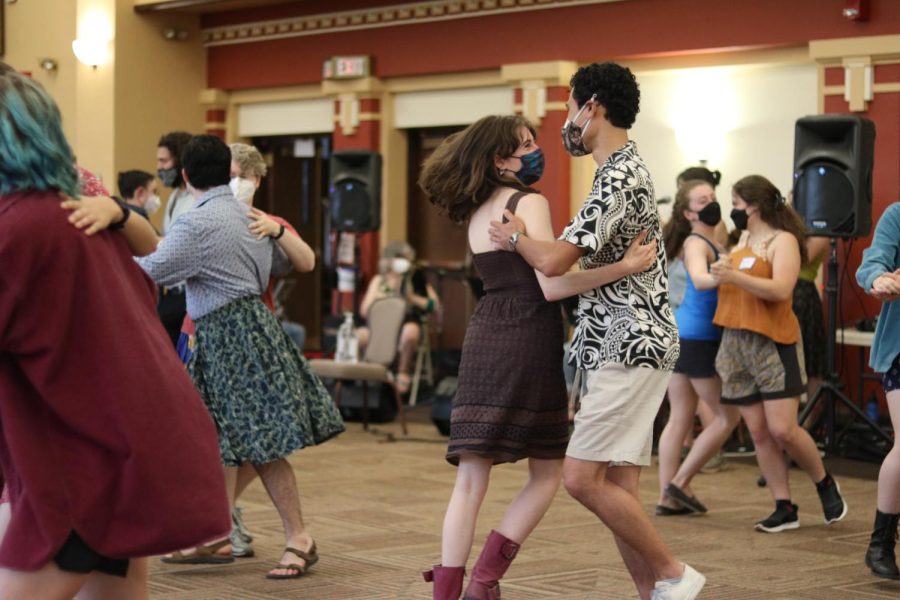Contra Dance Club Returns With Event at Carnegie
This past Thursday, the Root Room in Carnegie Building was the site of an open band and a menagerie of spirited folk dancers. After its hiatus due to COVID-19, the Contra Dance Club welcomed the community to its first dance of the year. Contra dance, often referred to as New England folk dance, is easy to pick up; couples switch periodically, the ‘caller’ calls out instructions for each successive set of moves, and by the end, everyone has danced with everyone. Though contra’s form lends itself to on-the-spot learning, the event provided a half-hour lesson prior to the full swing of festivity. The club’s leaders wanted to ensure the dance was a comfortable space for newcomers and to facilitate the accessibility that defines contra dancing communities across the country.
“One of the big hopes for the event is to find a lot of people who either haven’t heard of contra dancing before or people who have and haven’t [been able] to do it in a couple years,” said double-degree fourth-year and Contra Dance Club co-leader Sam Brinkley. “Contra dancing clubs and communities around the country like to have a beginner’s lesson right beforehand. … I think contra dance is a whole lot about accessibility and making sure that lots and lots of people can feel accepted and involved. That’s one of the beauties of it — it’s not something that you have to take a class in.”
Contra dance has been a pivotal part of Brinkley’s Oberlin experience. Prior to coming to college, he practiced contra dance at summer chamber festivals in New Hampshire, where he met Molly Tucker, OC ’20. Tucker served as the club’s leader at the time and was key in persuading Brinkley to attend Oberlin. When Tucker graduated, Brinkley and his current co-leader, College fourth-year Eliza Goodell, stepped up to the plate. Though the future seemed unclear at first, the Contra Dance Club found traction fairly quickly.
“Sam got in touch with me and was like, ‘Let’s, see if we can make this happen,’” said Goodell. “One of the things that I think I was worried about before was that we had kind of lost our network of people who were helping out with the dances. … A lot of them had graduated, and I didn’t know anyone younger who was interested. Right around the time when we reactivated the org and were starting to think about making it happen, there were several people that reached out and were like, ‘Do you know anything about this?’ It was all in the same week. It was really funny.”
Many of the club’s current members are first- and second-years. College first-years Bizzy Seay and Rosalie Coleman helped organize both the dance and the open band. For Seay, who plays the fiddle and has participated in contra dances since she was two years old, her first year of college came at a good time. Now that the Contra Dance Club is stepping back into full swing, she has been able to transplant her contra dance experience onto the floors of Oberlin’s campus. But it’s not her seasoned knowledge that draws her into contra dance; it’s the discipline’s immersive and freeform nature.
“It feels like a really open community to me,” Seay said. “It’s so easy to jump into it without really knowing what’s happening. At a lot of contra dances, they’ll do English country dancing, which you see in, like, Jane Austin movies. That’s much more subdued and proper — contra dancing is … much more fast-paced and energetic, and people really have fun with it.”











